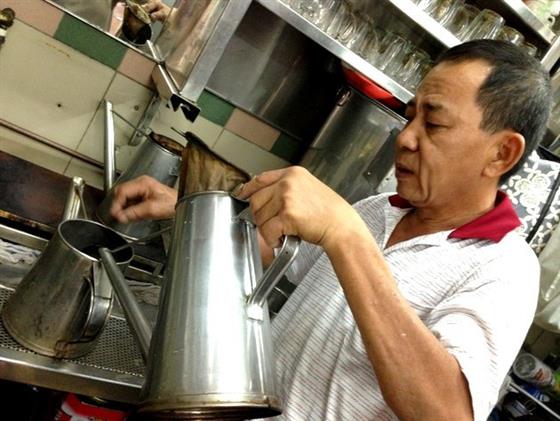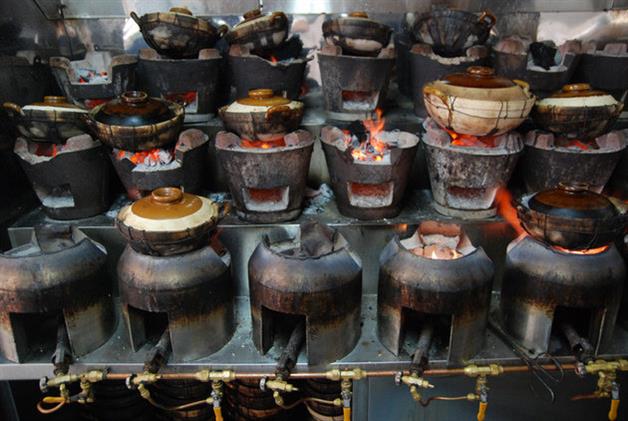
Specialised Street Food Equipments we barely notice
By KF Seetoh - Thursday, Feb 14, 2013
Street food is a very attractive culture in so many ways. It arose organically and mostly out of desperation in tough times, especially in developing countries , where economic opportunities are scarce. Many of these hawkers around the world are not officially trained and at best they are just dutifully following instructions from a previous generation of street food masters.
Most have no idea what their colourful or even rare equipments do exactly. They just follow the leader. Often, they are very intriguing, entertaining even, to the casual eye. And in so many ways it is, as it acts as a form of POP (point of purchase) advertising.
Here are some things they do and use which should beckon a second look the next time you see it.
1. The three foot long steel spatula– If you pass by a nasi padang or mee poh tah stall early in the morning, as they are prepping for the day, you might see a long steel spatula lying around. It’s like the ones you have at home, except it comes with a three foot handle. They use this to shovel the sambal or sauce over a low stove pot or wok. It makes sense, as it takes a lot more shoulder power and elbow grease to fry them at regular height level- and besides, they make a huge, army camp cookhouse portion. It makes total sense to conserve as much energy as possible before the stall opens.

2. The kopitiam kopi sock and iron snout pot – the kopi socks, which is a rare and unique kopitiam soon-to-be memorabilia, is quite a sensible contraption and concept. The coffee “socks” which acts as a reusable filter, sits in a steel pot with a narrow top. It holds the heat longer and sometimes they use it for two percolations (for when customers ask for a lighter or “kopi po” cuppa). The long snout helps prevent spillage when transferring from pot to pot.

3. Auto fan cooled charcoal stove- While it is not illegal to use charcoal stoves in Singapore, the reason why some applicants fail in their quest to retain this tradition is very obvious. They did not provide a stove control system that minimises or eliminates pollution. Some of the older “lao chiao” or seasoned hawkers custom makes a stove which contain and filter the smoke and dust. They also install a precision fan that blows up the heat and fire at a switch of a button, whenever they require higher heat.
4. Polished bottle caps – In parts of Indonesia, some street food vendors scrape coconut with a contraption that looks like a tiny wooden stool with a handle connected to an steel bottle cap with jagged edges. They sit on it to steady themselves, then run the insides of a coconut over the bottle cap. Little strips will gather below and it’s used often for dessert like Es Teller or Alpocat (an avocado milk shake that sometimes have coconut strips). Some hawkers simply use a clean bottle can and manually scrape them.

5. A small piece of gently curled stainless steel sheet – Street fruit sellers in Thailand commonly employ this very useful and simple tool. It helps them cut their fruits in quick time. The curve of the steel plate follows the curve of the blade so each slice completely cuts the papaya, pineapple or mango. Clean cut, fast and it hardly takes up space.
Such skills, information and knowledge are what we seek to capture and share at our upcoming World Street Food Congress dialogue planned for the middle of the year. It is only meaningful for us to be students and observers of this great street food culture, as it addresses skills, jobs, opportunities and reputation for professionals, organisations and a nation’s food culture branding.\


